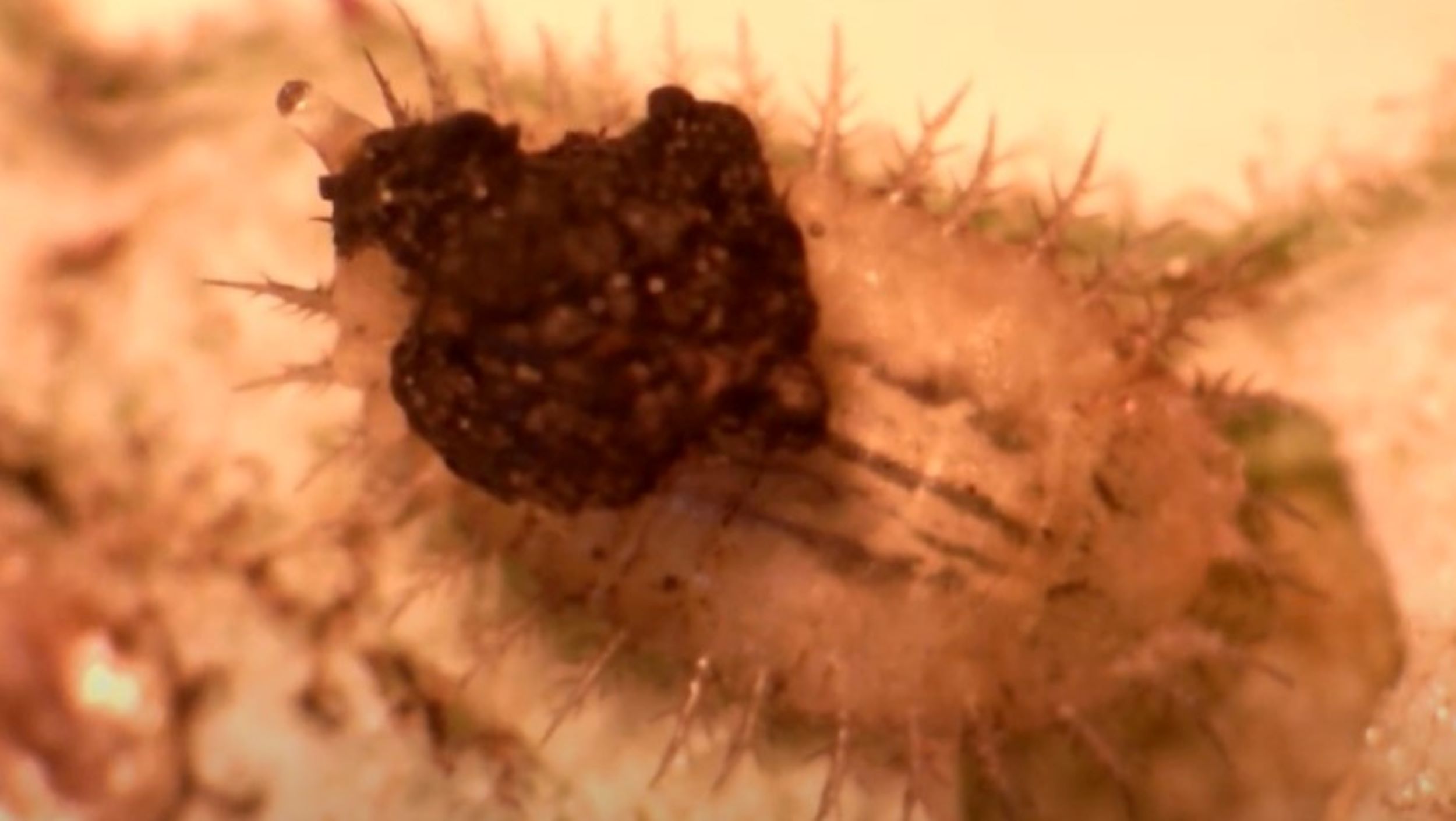Tortoise beetle larvae use their telescopic anuses to build shields from shed skin and poop
Many tortoise beetle larvae create shields for themselves using faeces and old skin. Scientists have now looked at how and why they create these poop parasols.
Like their reptile namesakes, tortoise beetle larvae lug protective coverings around with them. But rather than residing beneath domes of bone and keratin, their shields are made of humbler materials: feces and shed skin.
Plenty of insects — especially in their larval forms — create shelters for themselves. Caddisfly larvae create tubes of stones and sticks, while some caterpillars plod along encased in silk covered with debris.
But most of the approximately 2,700 species of tortoise beetle, a distinct group within the Cassidinae, a subfamily of the leaf beetle family Chrysomelidae, employ an extreme form of recycling. Their larvae fashion a variety of shield-like contraptions using frass, or fecal matter, and exuviae, or shed exoskeletons.
In a new study published Aug. 30 in the journal ZooKeys, researchers looked at the construction of fecal shields in four species of tortoise beetle: Calyptocephala attenuata, Cassida sphaerula, Stolas cucullata, and one unidentified species. Their observations offer insights into how the larvae use and maintain these bizarre scatological structures.
Related: Insect that flings pee with a butt catapult is 1st known example of 'superpropulsion' in nature
Some leaf beetles may begin their lives in a cradle of feces — in some species, the mother beetle covers her eggs with waste to protect them before they hatch. This may also transfer useful bacteria. In tortoise beetles, the mother may leave her eggs exposed or conceal them within an ootheca, or a protective case, sometimes decorated with fecal pellets.
After hatching, some species begin creating their fecal shields immediately, using their strange telescopic anuses. These long and highly manoeuvrable appendages extend from the body to position their bowel movements atop their caudal processes — paired structures protruding from their rears.
Get the world’s most fascinating discoveries delivered straight to your inbox.
Other species, which only use their old skins, wait until their first shed to begin creating the shield. They scoot the discarded skin most of the way down their abdomen, retaining the crumpled husk at the tip.
In both cases, the larvae retain this shield with each consecutive molt. Some species combine their shed exoskeleton with feces, ending up with a mound of poop-encrusted exoskeleton precariously balanced on their rear ends. Despite the seemingly ponderous nature of this structure, they are able to maneuver it, holding it delicately over the rest of their bodies like a parasol of dung.
When the researchers removed the shields of several larvae, the critters began replacing them as soon as they produced more droppings. They also repaired their shields when they were damaged, applying more feces to the broken areas in order to balance the load.
"Clearly the symmetry is important and they can detect that," lead author Caroline Chaboo, a research associate at the Nebraska State Museum at the University of Nebraska-Lincoln, told Live Science.
Researchers have proposed a number of reasons for this creative use of excrement. One idea is that they may serve to shield the tender larvae from the elements, protecting them from drying out or overheating.
"Evolutionary, what I'm looking at is the transition from mining leaves — living inside the leaves — to living openly on the surface of the leaf," Chaboo said, referring to the fact that many Chrysomelidae larvae tunnel through plant matter. "That is a very different habitat in terms of physical qualities: temperature, humidity, sunshine."
The shields may also be a form of mimicry. They resemble bird droppings so are likely unappealing to most predators. "Secondarily, these structures may have become a barrier to predators and parasites," Chaboo said.
Some tortoise beetles also appear to apply liquid droplets using their dextrous anuses. These droplets may contain toxins they have extracted from their host plants as a further deterrent. "The nasty chemicals they use volatize and leak off into the atmosphere, so every now and then they have to top them off," she said.
Many tortoise beetles retain their shields as they pupate, protecting them as they metamorphose. The adult beetles, however, are not walking latrines. They do indeed resemble tortoises — their often beautifully colored and iridescent wing covers are rounded on top and flatten out at the edges. They tuck their legs and bodies beneath this jewel-toned armor for protection — presumably a relief after months of hunkering down beneath a pile of poo.
Editor's note: This article has been corrected to say tortoise beetles are a distinct group within the Cassidinae subfamily.

Richard Pallardy is a freelance science writer based in Chicago. He has written for such publications as National Geographic, Science Magazine, New Scientist, and Discover Magazine.





